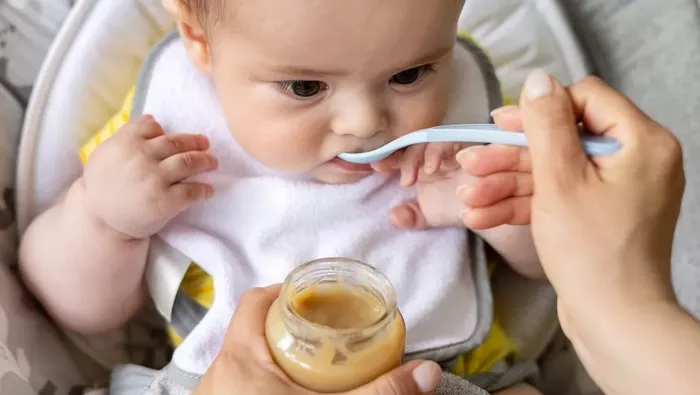Burping is a key part of feeding routines for infants. It helps release trapped air in their stomach, reducing discomfort. Some babies need more help than others to burp, depending on their feeding method and personal digestion. Knowing how to make your baby burp efficiently can ease feeding times for both you and your baby.
Why Burping Is Important for Infants
Babies often swallow air while feeding, especially when bottle-fed. This air can become trapped in their stomachs, leading to discomfort or gassiness. In some cases, not burping properly may cause spit-up or fussiness. Burping helps release this trapped air, promoting better digestion and preventing potential colic symptoms.
For breastfed babies, the need for burping may be less frequent. However, even they can swallow air during feeding, especially if the latch is not perfect. Burping ensures they are comfortable and ready for their next nap or activity.
When to Burp Your Baby
Timing is important when burping an infant. Most parents burp their baby:
- After every feeding session.
- Midway through a feeding, particularly if the baby is bottle-fed.
- When the baby shows signs of discomfort, such as squirming or pulling away from the breast or bottle.
It’s also helpful to observe your baby’s feeding habits. If your baby tends to feed calmly and takes breaks naturally, they may not need frequent burping. In contrast, babies who feed quickly or gulp milk may require burping more often.
Effective Positions for Burping
The right position can make burping easier and more efficient. Here are some common and effective burping positions:
1. Over the Shoulder
This is one of the most popular burping techniques.
- Hold your baby upright against your chest, with their chin resting on your shoulder.
- Support your baby with one hand, and use the other to gently pat or rub their back.
This position allows trapped air to rise naturally due to gravity.
2. Sitting on Your Lap
This position is great for babies who can hold their heads up slightly.
- Sit your baby on your lap, facing outward.
- Use one hand to support their chest and chin, keeping their neck stable.
- Gently pat their back with your free hand.
Ensure your baby is leaning slightly forward, as this helps release air more effectively.
3. Lying Across Your Lap
This position is suitable for younger babies.
- Place your baby on their stomach across your lap, with their head slightly raised and supported.
- Gently pat or rub their back.
Make sure your baby’s head is turned to the side to avoid breathing difficulties.
How to Pat or Rub the Back
The way you pat or rub your baby’s back matters. Use gentle but firm motions to encourage burping. Start at the lower back and work your way up. Avoid patting too hard or too quickly, as this can upset your baby.
If patting doesn’t work, try rubbing the back in a circular motion. Sometimes alternating between patting and rubbing can help release stubborn trapped air.
What to Do If Your Baby Doesn’t Burp
Not all babies burp after every feeding. If your baby doesn’t burp despite trying for a few minutes, they may not need to. However, if they seem uncomfortable or gassy, try these tips:
Change the position: Switching to a different burping position can sometimes help.
Give it time: Keep your baby upright for about 10–15 minutes after feeding to allow air bubbles to settle.
Gentle tummy massage: Lay your baby on their back and gently massage their tummy in a clockwise motion.
If your baby frequently struggles to burp and seems uncomfortable, consult your pediatrician. Persistent issues may indicate feeding difficulties or digestive concerns.
Tips for Successful Burping
Consistency and observation are key to making burping a smooth process. Here are some tips:
Feed in an upright position: Holding your baby at an angle during feeding reduces the amount of air they swallow.
Use slow-flow bottles: For bottle-fed babies, slow-flow nipples can help minimize air intake.
Take feeding breaks: Pause feeding periodically to burp your baby, especially if they seem to gulp milk quickly.
Be patient: Some babies take longer to burp than others. Stay calm and give them time.
When to Seek Medical Advice
While most burping challenges are normal, some situations may require medical attention. Contact your pediatrician if:
- Your baby frequently cries or appears in pain after feedings.
- They have excessive spit-up or signs of reflux.
- They consistently struggle to burp and show signs of discomfort.
The Emotional Aspect of Burping
Burping isn’t just a physical process—it’s also a bonding moment. Holding your baby close, gently patting their back, and speaking softly during burping can strengthen your connection. It’s a time to observe your baby’s cues and respond to their needs.
Conclusion
Burping your baby is an essential part of feeding care. By understanding when and how to burp effectively, you can make feeding sessions more comfortable for your little one. Every baby is unique, so take the time to find what works best for yours. With patience and practice, burping will become a natural and stress-free part of your routine.
Related topics:


